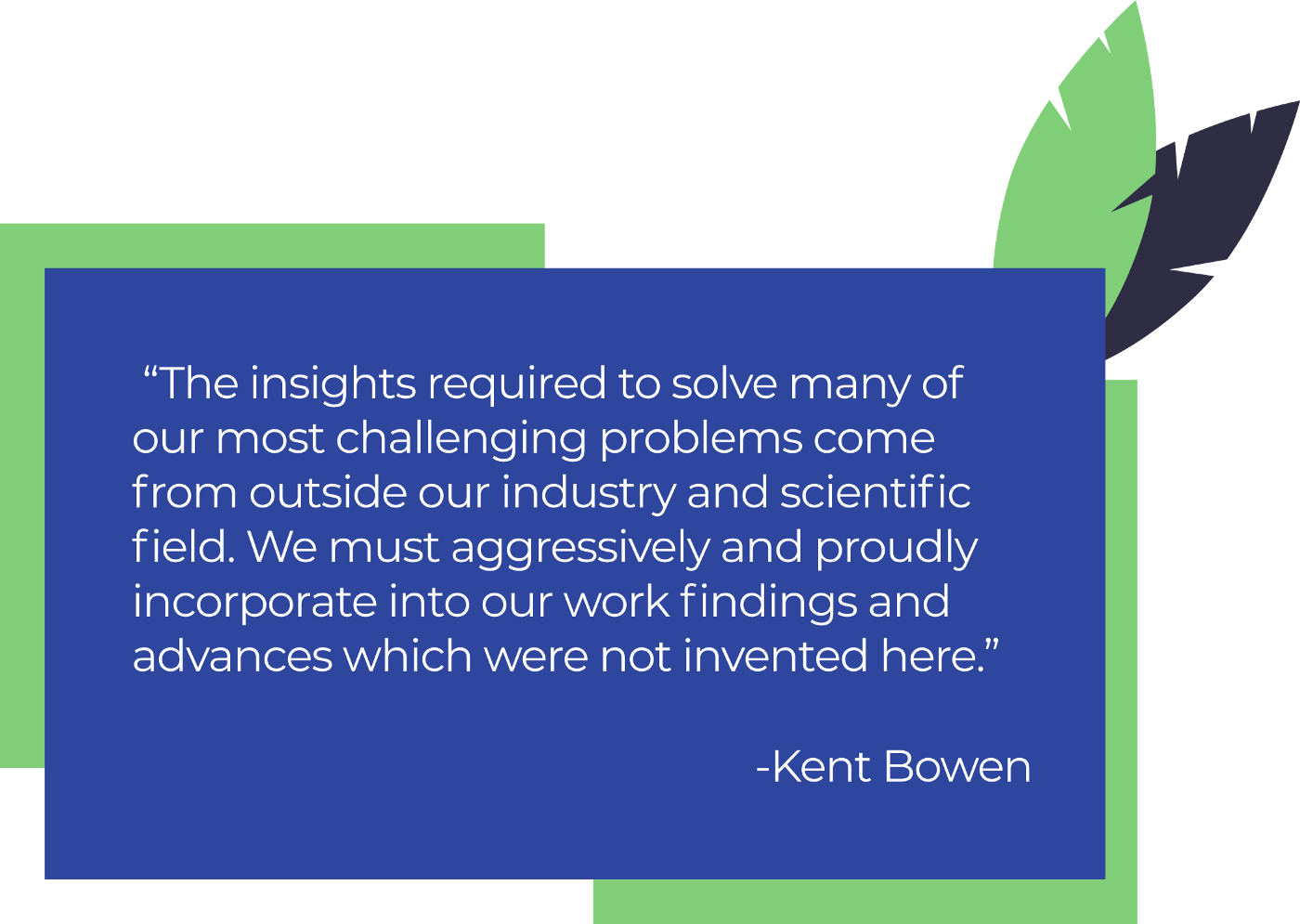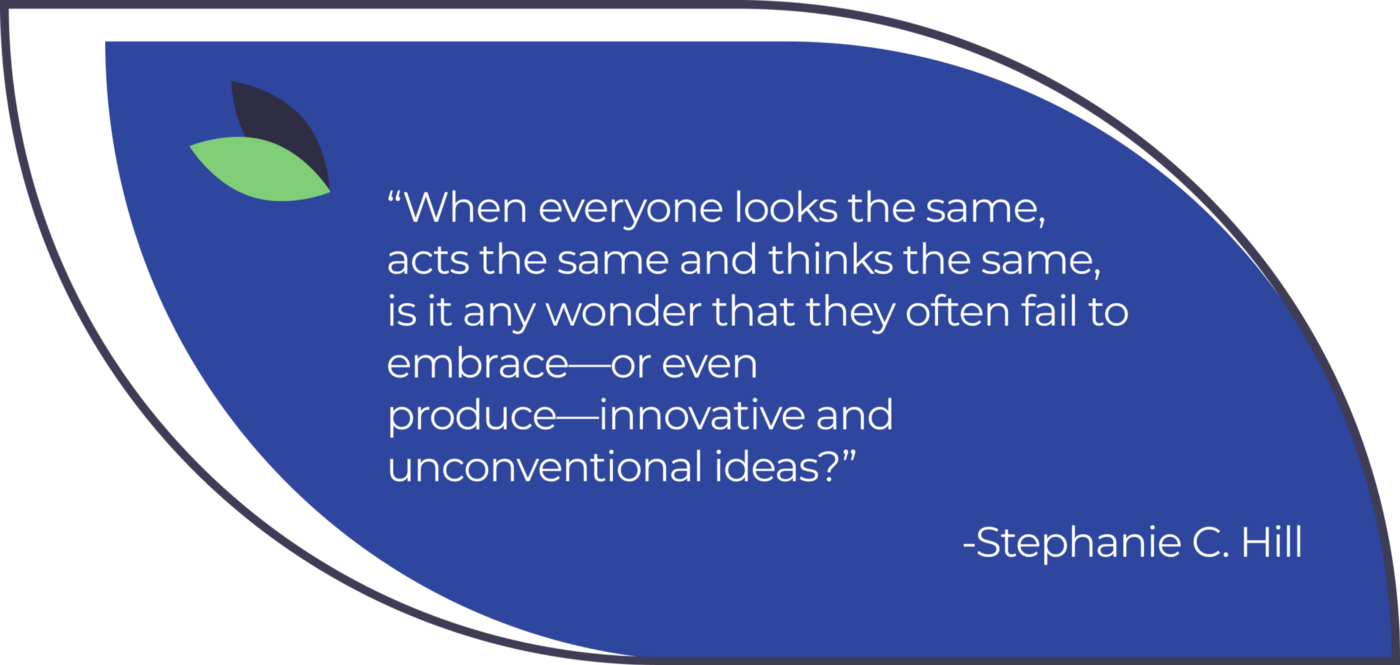Mar 26, 2021
Diversity
Innovation
Inclusion
Tech
Product Management
How Diversity Makes Us Smarter and More Innovative

Diversity has become the type of buzzword that either elicits eye rolls, heated debates, or uncomfortable silences. But as our world grows larger and we become more connected, it’s turned into the kind of word that’s dangerous to ignore.
We now have decades of research and hard data summarizing the effects of living and working with those different from us. And the numbers show that diversity is very much worth the effort. But how exactly is diversity good for us? What is the value behind something so fraught with friction and challenges? And more importantly: are we sacrificing performance in the name of scoring political points?
The hard truth about diversity is that it’s difficult. It creates discomfort, awkward moments, and even more awkward conversations. Things flow more easily when we are surrounded by others who look, think, and talk like us. Adding others to the mix complicates things. But the reason why diversity is so good for us is precisely because it’s so difficult. Diversity forces us to face friction and discomfort and interact with the unfamiliar. And nothing makes us grow quite as well as challenges do.
Diversity forces us to work harder
Diversity “is not better or worse — it’s just harder. It’s harder socially, it’s harder cognitively, and it makes us work”, explains Evan Apfelbaum from the MIT Sloan School of Management. We work harder to put our best foot forward in an environment where we don’t feel comfortable.
A study in which one group identified as Democrat and another who identified as Republican observed that the participants’ level of preparation for a debate varied greatly depending on who they were told they would be debating. Democrats who knew they would be talking to Democrats did not put as much effort into their points as Republicans who knew they would be debating a Democrat.
The prospect of being confronted with a dissenting opinion from someone different motivated subjects to work harder in preparing their defense. They had to be on their toes, consider opposing arguments, and identify the weaknesses in their own.
We feel better when we’re surrounded by people similar to us, but we perform best when we force ourselves to work with those who are different from us. The constraints that conflict, debate, and friction create help us think smarter and more creatively. They force us to look at our ideas objectively and critically. Echo chambers, in contrast, breed complacency and a false sense of security. They’re the types of environments in which groupthink leads to stagnation. This type of environment is increasingly becoming a liability in a rapidly-changing world.
Integrative thinking leads to better solutions
Aside from making us work harder, the tension opposing ideas create is a catalyst for integrative thinking. This approach has been proven to be one of the most effective ways to solve complex problems. It involves confronting diverging options and considering the valid points of each side. Instead of choosing one over the rest, you combine all their positive elements into a hybrid solution superior to its parts.
Considering different perspectives helps us understand problems better. The more frames we pool, the more comprehensive our solutions will be. A single person or a homogenous group will be limited in their outlook and, therefore, in the number and quality of the solutions they will come up with. Broadening the scope of the ideas they input into the process will exponentially increase their chances of coming up with better, more innovative answers. And there is no easier way to force a team to think differently than by diversifying its composition.

As a young software engineer at Lockheed Martin, Stephanie C. Hill learned the value of integrating diverse perspectives to solve complex problems. She was assigned to lead a team tasked with updating a launch-control unit system for the US navy. Her team of 30 would have to work with very new technology, a tight deadline, and an even stricter budget. It was a difficult task that required a heavy dose of out-of-the-box thinking and creative solutions. Success rested on Stephanie’s ability to harness the collective outlook, experiences, and expertise of those 30 individuals. Every team member would need to be engaged and contribute at 100%. She ensured this by creating an atmosphere where everyone felt comfortable asking questions, proposing new ideas, and openly debating others. Her biggest concern was to “allow the best idea in the room to go unexpressed because someone did not feel comfortable enough to express it.”
Stephanie’s team’s strength resided in the fact that they were diverse and embraced those differences. Welcoming diverse outlooks allowed them to establish a dialogue where all parties felt their input was valued. Every idea was equally worthy of consideration and debate. In the face of complex problems, the ability to develop equally complex solutions has become an essential trait in those working to solve them. This requires getting comfortable with conflict and debate and understanding the value that divergent views can add to our own.
Intersecting ideas breed innovation
Integrating ideas not only leads to better solutions; it also fosters creativity and innovation. Joining seemingly disparate ideas into new ones is the single most important trait of innovative individuals and teams. The more far-fetched the sources that we draw from, the more unique our product will be. It’s how computers and phones became smartphones or how wooden planks and wheels became skateboards.
Ideas don’t come out of thin air. Whether consciously or unconsciously, we steal and borrow quite a bit when we create. Frans Johansson’s book, ‘The Medici Effect,’ is centered around this concept that intersections spark innovation. He proposes that diverse sources lead to unconventional connections, and it’s in these connections where innovation is born. Every new person, idea, or experience that we come into contact with exponentially increases the number of new connections that we can make. In other words: exposing ourselves to different people, ideas, and experiences is how we become more creative and innovative. It’s no surprise that the world’s top innovation hubs are found in large, diverse cities like New York, London, or San Francisco. It’s also no coincidence that diverse teams present much higher rates of innovation.
Innovation is a numbers game — and diversification is how we win at it. It allows us to control for uncertainty in what is a risky gamble. We use diversification to manage risk in areas where a lot of value is involved such as assets, financial investments, or decisions.
Human capital, points out Paolo Gaudiano of the NYU Stern School of Business, has somehow escaped being applied the same approach — despite involving more risk and more value than any other resource. “Any company that figures out how to diversify its human capital to increase performance,” he argues, “ will have a huge competitive advantage.” If we are not willing to bet everything on a single move, why shouldn’t we also be wary of betting everything on a single vision? When innovation is not just a nice thing to have but something we must have, it becomes about survival. And betting that survival on a single outlook is a very risky thing to do.

Inclusion is the true driver of innovation
Diversity is the future. That may sound like a tired catchphrase, but that’s because it’s true. Mixing with others, seeking new experiences, and expanding our horizons have been a constant throughout human history. Our current hypermobile and hyperconnected reality and its ceaseless demand for innovation will only add fuel to that.
Both empirical and anecdotal data have repeatedly confirmed the benefits of diversity for individuals and teams. They are better at solving problems, making better decisions, and are more successful. However, the secret to their strength isn’t solely in their numbers or in the variety of their inputs. The true power behind these teams and individuals lies in inclusion. Inclusive environments allow differences to come out and shine. They help people feel comfortable in their diversity and promote collaboration and debate - just as Stephanie did with her team at Lockheed Martin.
Without inclusion, diversity becomes an empty quota that adds no value beyond looking nice on paper, pictures, and company mission statements. Diversity, especially on the scale that our modern world demands it, is difficult. Never before have so many different individuals from so many different backgrounds come together in the way they are right now. Learning to see the challenges in these environments as opportunities for progress, innovation, and growth instead of obstacles is the first step in unlocking their extraordinary potential.
If you enjoyed this post, you might also like: